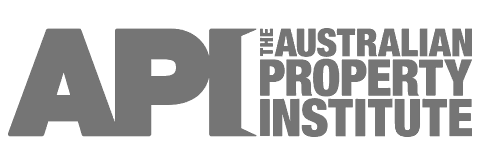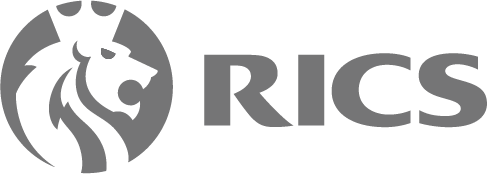Plant and Equipment Glossary
Ordering a plant and equipment valuation can be difficult for some when the term plant & equipment is unfamiliar. To help, the Plant and Equipment Valuation WA team has created a glossary of terms in hopes that it can assist in boosting confidence and help you get more out of your valuation report. Our plant and equipment valuation glossary includes a variety of definitions for terms that may be included in a valuation report, said by a valuer, or may be found when researching asset valuations. Becoming more familiar with these terms can help you create your own asset valuation criteria that you can provide when requesting a quote or speaking with a valuer.
We are industry professionals, producing reports that comply with the guidelines of the Australian Property Institute (API)ᵃ. We also follow the standards of the Australian Accounting Standards Board (AASB)ᵇ and the international regulations of the Royal Institution of Chartered Surveyors (RICS)ᶜ. As such, our company observes their valuation definitions when creating our reports and communicating with other professionals. Some of the definitions below have been sourced from these organisations but many have been written by our own specialists.
So that our plant and equipment glossary is easier to digest, it has been divided into three sections:
- Key Plant and Equipment Valuation Terms: These are terms that are found on about every page of our website. If you are new to plant and equipment valuations, these definitions could be of assistance.
- Valuable Definitions: Value can be defined in many ways. The most appropriate definition is determined by the situation and what is required by the client. Learn the different types of value so that you’re familiar with your options and can ask for exactly what you want from a valuation.
- Valuation General Terms: For those that have a general interest or are completely new to valuations, these definitions may be good to know in many situations.
If you prefer to speak with an expert, feel free to contact us for valuation definitions or more information.
Key Plant and Equipment Terms
PLANT AND EQUIPMENT
Every fixed asset belonging to an entity that contributes to its annual income. This income must be made through the use of the asset and not its sale or consumption.
PLANT AND MACHINERY
A term that is synonymous with plant and equipment.
PROPERTY, PLANT AND EQUIPMENT
All long-term physical assets of a business including real estate, technology, tools, and machinery.
VALUER
All long-term physical assets of a business including real estate, technology, tools, and machinery.
VALUATION
An evidence-based assessment of an item to determine its monetary value at a specified date.
PROPERTY VALUER
A valuing professional with the appropriate education and training to value real property.
PLANT AND EQUIPMENT VALUER
A specialised valuer with the expertise and qualifications to value the plant & equipment of an entity.
P&E
Abbreviation of the term plant and equipment.
PP&E
The abbreviated form of the term Property, Plant and Equipment. Mostly used by those in the industry or in finance.
P&M
The abbreviation of plant & machinery. May be seen in reference to a valuer who has been certified by the API as a plant and machinery valuer.
AUSTRALIAN PROPERTY INSTITUTE
An established and well-regarded body endeavouring to increase the performance of the entire property profession. They are responsible for setting and maintaining high standards for education, ethics, conduct and practice for their members.
API
Abbreviation of the Australian Property Institute. As well-known as the institution itself.
CERTIFIED PRACTISING VALUER
A certification given to valuers who have applied to the API and have met their strict criteria. Valuers with this certification are proven to have had a high degree of education, training, and experience. Shown to conduct valuations in accordance with the API’s guidelines.
CPV
Abbreviation for the API certification of Certified Practising Valuer.
CERTIFIED PRACTISING VALUER (PLANT AND MACHINERY)
A certification awarded to plant and machinery valuers who have met the qualifying criteria of the Australian Property Institute.
ROYAL INSTITUTION OF CHARTERED SURVEYORS
International professional body regulating the standards for property professionals of various categories across the globe.
RICS
Well-known abbreviation of the Royal Institution of Chartered Surveyors, an organisation enforcing world-wide standards for property professionals.
Valuable Definitions
MARKET VALUE
An estimate of the amount an asset or liability may be exchanged in an open transaction at a certain date. The transaction would be between a buyer and seller acting willingly and prudently.
ENTERPRISE VALUE
The overall value of an entity including its long-term, short-term debts and interest-bearing liabilities, minus cash and cash equivalents.
EQUITY VALUE
The market value of an entire enterprise when all debt and debt liabilities have been cleared, plus cash and cash equivalents.
FAIR MARKET VALUE
The simulated price property would be exchanged in an open and unrestricted market, between a willing buyer and a willing seller acting without compulsion.
FAIR VALUE
An amount as at the valuation date reflecting the price of an asset or liability in an arm’s length transaction between judicious and willing parties.
FORCED LIQUIDATION VALUE
A form of Liquidation Value in which an asset or assets are presumed to be sold with less than a reasonable period of market exposure. Contrast with Orderly Liquidation Value.
GOING CONCERN VALUE
Value, as determined with the logical assumption an enterprise would continue to be in operation for the foreseeable future.
INVESTMENT VALUE
The value of an asset or business to its owner reflecting the interests of an investor.
LIQUIDATION VALUE
The amount, net of relevant costs (e.g., preparation and disposal), that would be realised if the business is terminated, and the assets are sold. See also Orderly Liquidation Value and Forced Liquidation Value. ᶜ
MARKET RENTAL VALUE
The amount rent can be fairly charged on a sensible tenant, based on objective market research.
NET ASSET VALUE
The difference between a business' total assets and liabilities restated at a particular Standard of Value rather than accounting book values. ᶜ
NET BOOK VALUE
The difference between a business' total assets and liabilities at accounting book values (synonymous with book equity). With respect to a specific asset, this is the original capitalised cost less accumulated amortisation, depreciation, depletion, allowances, or impairment. ᶜ
ORDERLY LIQUIDATION VALUE
A form of Liquidation Value in which the asset or assets are presumed to be sold over a reasonable period of market exposure to maximise expected return. Contrast with Forced Liquidation Value. ᶜ
SALVAGE VALUE
The estimated value of an asset at the end of its useful life. While it may no longer serve its original purpose, the asset may be sold, recycled, or used in an alternative manner.
STANDALONE VALUE
The estimated value of a business, investment, or asset in its current condition.
SYNERGISTIC VALUE
The expected value resulting from a combination of two or more assets or businesses, which is greater than the sum of the separate individual parts. ᶜ
Valuation General Terms
APPRAISAL
Can be used as an alternative term to valuation as it is a process of assessing an item to determine its value. With property, it is more associated with an informal assessment made by real estate agents.
ARM’S LENGTH
An exchange between two parties of no relation or previous affiliation in an open and unrestricted market.
ASSET
A valued item or resource that may be used by an individual or entity to produce positive economic value.
ASSETS REGISTER
A document listing all assets owned by a business with relevant data to manage and maintain each asset.
BUSINESS
A commercial, industrial, service, or investment entity (or a combination thereof) pursuing an economic activity. ᵃ
BUSINESS COMBINATION
A transaction or other event in which an acquirer obtains control of one or more businesses. Transactions sometimes referred to as ‘true mergers’ or ‘mergers of equals’ are also business combinations as that term is used in this Standard. ᵇ
CAPITALISATION RATE
Also referred as “Cap Rate”, this is a measurement tool used to compare potential investments. The rate is presented as a percentage that demonstrates the possible rate of return.
CLASS OF ASSETS
A group of assets belonging to the same category as they are of a similar nature or use within a business.
COST
The amount of cash or cash equivalents paid or the fair value of the other consideration given to acquire an asset at the time of its acquisition or construction, or, when applicable, the amount attributed to that asset when initially recognised in accordance with the specific requirements of other Australian Accounting Standards, for example AASB 2 Share-based Payment ᵇ
COST APPROACH
A valuation method in which an asset’s value is calculated through the sum of all influences and variables affecting its cost of replacement.
DEPRECIATION
A method in accounting where costs of a fixed asset are allocated throughout its useful life with consideration for reduced value due to natural wear and tear as well as the asset’s obsolescence.
DESKTOP ASSESSMENT
A valuation conducted wholly with available data and documentation without the need for a valuer to physically inspect a property.
EQUITY
The residual interest in the assets of the entity after deducting all its liabilities. ᵇ
ECONOMIC OBSOLESCENCE
A form of depreciation or loss in value or usefulness of an asset caused by factors external to the asset, especially factors related to changes in demand for products or services produced by the asset. ᶜ
FUNCTIONAL OBSOLESCENCE
A loss of utility resulting from inefficiencies in the subject asset compared to its replacement that results in a loss of value. ᵃ
GOING CONCERN
The reasonable assumption an enterprise will continue to operate as normal for many years to come.
GOODWILL
An asset representing the future economic benefits arising from other assets acquired in a business combination that are not individually identified and separately recognised. ᵇ
GROSS RENT
The rental reserved or derived under lease or tenancy arrangement(s) where there is no further obligation on the tenant to pay any other property costs other than tenancy utilities and cleaning. ᵃ
HIGHEST AND BEST USE
The use of an asset that maximises its potential and that is physically possible, legally permissible and financially feasible. ᵃ
IMPAIRMENT
A permanent loss of an asset’s value as the reduction is beyond recovery.
INCOME APPROACH
A method of valuation taking into consideration the income generated by the asset.
INTANGIBLE ASSET
An asset that lacks physical substance and derives value from the economic properties that grant rights and/or Economic Income to its owner (e.g., patents, copyrights, trademarks, or customer relationships). ᶜ
LEASE
An agreement whereby the lessor conveys to the lessee in return for a payment or series of payments the right to use an asset for an agreed period of time. ᵇ
LESSEE
A tenant. A person in a lease agreement to rent a property owned by an entity or individual/s.
LESSOR
Commonly referred to as a landlord, this is the owner of a property that is being leased.
MARKET APPROACH
A common method to value an asset involving the use of sales data of comparable or equivalent items.
MODERN EQUIVALENT ASSET
An asset similar in nature, operation or use as the subject asset but is contemporary in its design or construction.
OBSOLESCENCE
When an asset may no longer be considered useful or is no longer in demand leading to a considerable loss in value.
RATE OF RETURN
An amount, expressed as a percentage of the amount of the investment, of anticipated or realised Economic Income and/or change in value of an investment. ᶜ
REAL PROPERTY
A parcel of land consisting of improvements, structures, buildings, and permanent fixtures.
REPLACEMENT COST
The expected monetary amount exchanged for an asset’s equivalent or reconstruction.
RENT REVIEW
An assessment recurring at regular intervals to determine the lease amount for an asset.
RETURN ON INVESTMENT
A measurement of the performance and efficiency of a potential investment considering its possible earnings versus costs.
TANGIBLE ASSET
An asset that has physical form and derives value from its physical properties or tangible nature (e.g., real estate, property, plant, equipment). Contrast with Intangible Asset. ᶜ
TECHNICAL OBSOLESCENCE
The stage an asset’s usefulness and desirability have been affected by the existence or want for a new technology that may be more cost-effective and efficient. The original asset would still be in sound condition and working order.
Re-defining Expert Plant and Equipment Valuations
Valuers provided by Plant and Equipment Valuation WA are industry experts. Each has an API certification and has a minimum of 20 years of valuing experience. Our expert team are well educated and is more than familiar with these terms, however, we do believe in good communication. We always adjust our speech and use of these terms if it means our clients can better understand our service and can be confident in what is being ordered. We do everything we can to avoid any miscommunication.
If there are any questions about our services or about plant and equipment valuations, our team is available to assist. You can reach our team by calling on (08) 6245 2131 or by filling out our website’s contact form and we will be in touch as soon as possible.





